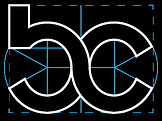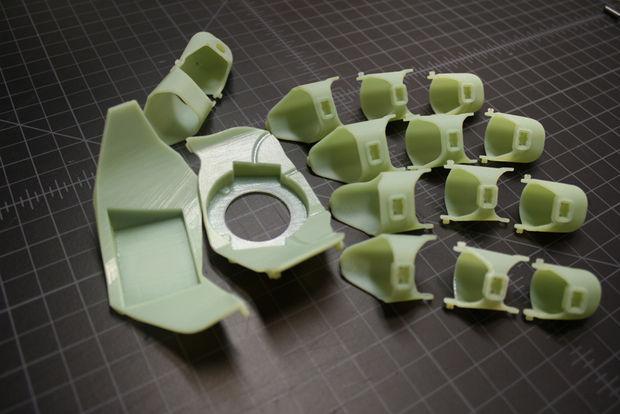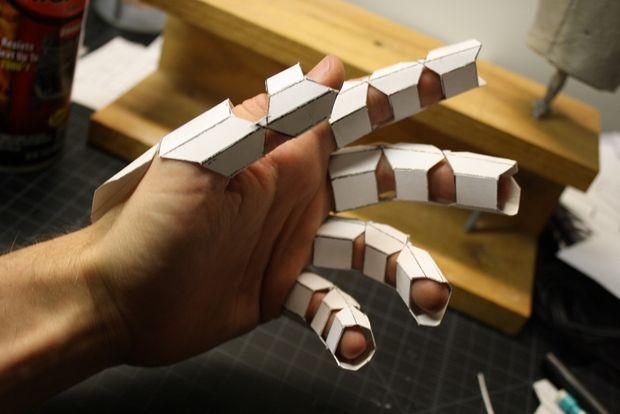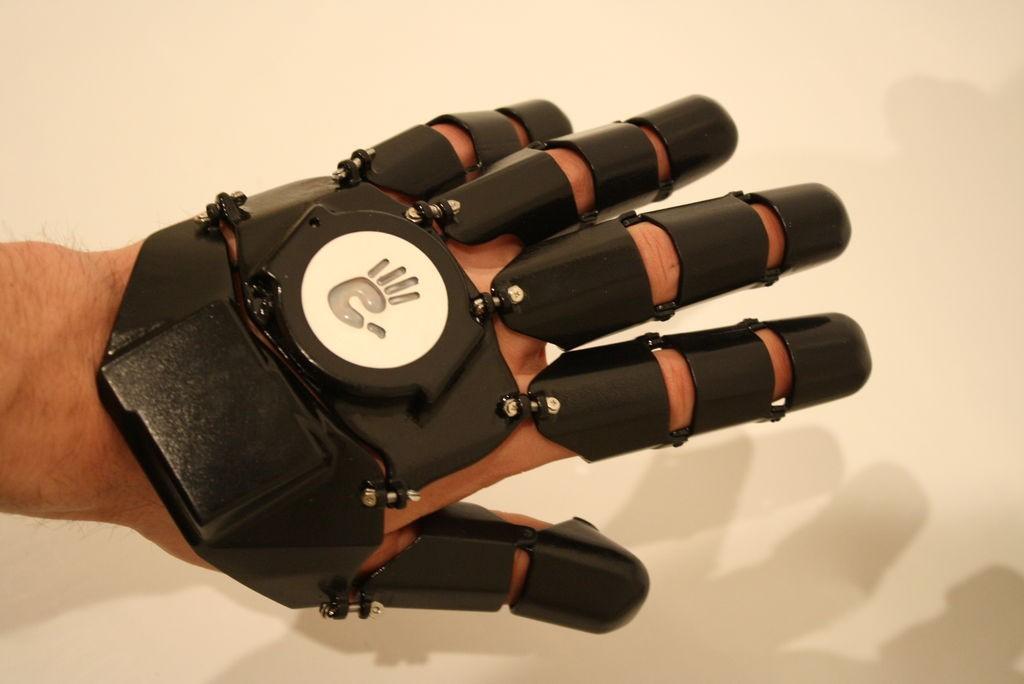 Brian Cera is a maker who likes to give back to the open-source community of 3D designers and 3D printing enthusiasts, and that’s just what he is doing with a 3D printed product that is very likely to hit the spotlight and gain a lot of attention from technology enthusiasts.
Brian Cera is a maker who likes to give back to the open-source community of 3D designers and 3D printing enthusiasts, and that’s just what he is doing with a 3D printed product that is very likely to hit the spotlight and gain a lot of attention from technology enthusiasts.
You’ve probably got a smartphone and you might have a smartwatch, too — but how about a smartphone built into your hand? With all the cool of a secret service agent, and the convenience needed for the busy-busy culture we live in, Cera’s design looks like the logical phone of the future for many.
Cera is a professional artist who designs technological art for public spaces as well as video game installations and more. During a recent foray and interest in cosplay sites, blogs, and projects, Cera became inspired to create a “wearable technological object.” Inspired by the latest changes and behaviors regarding technology, Cera delved into the idea that we are so connected to our phones these days (and isn’t this the truth, folks?) that they have become part of us, almost like an extra limb.
He wanted to attempt a more complex 3D printing project that went beyond some of the minor variations and designs he had seen, such as a rudimentary setup with a Bluetooth headset inserted inside a winter glove. Going for a full-on, hand held phone, in the most literal sense possible, Cera needed about two months to complete this project, the files of which are available for free download on his Instructable. (A warning is issued regarding safety, as there are some tools and chemicals which can be potentially hazardous and require you to use proper safety such as goggles, ventilation, and gloves.)
held phone, in the most literal sense possible, Cera needed about two months to complete this project, the files of which are available for free download on his Instructable. (A warning is issued regarding safety, as there are some tools and chemicals which can be potentially hazardous and require you to use proper safety such as goggles, ventilation, and gloves.)
A large part of the design that was appealing to Cera was in hacking electronics, an activity he finds highly enjoyable — and the theme carries through the entire design, with Cera’s recommendation to try it with some other projects as well. For Glove One, he opened up an existing phone and divested it of all its buttons and switches, soldering the proper wires and components together.
“This method of hacking an existing device would be the cornerstone of the Glove One project. I’d use this method for ‘extending’ buttons from the phone’s circuit board to my fingers, as well as for the microphone and speaker of the phone,” said Cera.
If you intend to use Cera’s designs, this project could take a month or so, and while it’s quite involved, there’s a lot of fun and ‘hands-on’ learning integrated into making the Glove One. His first — and very interesting — step was to make a paper prototype of the glove for sizing and creating a visual representation.
After that, deciding on what materials to use for this invention obviously took some consideration, with a variety of options available.
“After doing a bit of research I discovered that the Mk. IV and Mk. V armor gloves from Iron Man 2 were actually 3D printed,” said Cera. “This helped me decide that 3D-printing technology would be my best bet for achieving the futuristic look I was after, and would also simplify the process of integrating the circuit and components into the design.”
Deciding which cell phone to hack was of most importance and something you’ll want to place close attention to if you are making this design. Cera focused in on the Burg Watch Phone mainly because of its button design, which is “small and tactile,” but he was able to strip a number of components from the phone such as the plastic button-caps, battery, speaker, and microphone.
Cera used SolidWorks to create the files for the glove, and recommends it for easy use as well as a good method for customizing your own glove with the foundation already set for you in his downloadable file. It’s also easy to customize the hand and fingers for other sizes.
Once everything is ready for 3D printing your Glove One, Cera recommends, from his own experience, evaluating whether your 3D printer has the capacity and resolution for 3D printing the plates for the phone for enclosing the circuit, battery, and finger segments — which encompass the microphone and speaker as well. Cera decided to have those outsourced to Ponoko, where they were 3D printed with ABS on a Connex Objet 3D printer. He also recommends consulting with Ponoko if you do not have a CNC mill handy, as some of the other components will also need to be cut from stainless steel.
For making the logo, Cera hacked some of the LEDs from the Burg Watch Phone circuit, inspired by the style of the Apple logo, which lights up under power. With some craftsmanship, heat, tape, and resourcefulness, he was able to make it work fairly easily, giving the logo and button a high-tech, expensive look.
Once you have all your 3D printed parts, metal parts, electronics, and hardware, it’s recommended that you sand and paint the 3D printed items for a smooth, glossy finish — like a modern cell phone would have.
The assembly process requires some complex wiring which you can view in totality in Cera’s Instructable, which also includes several videos. Basically, for soldering the components, Cera chose the same type of wire that is used for headphones and earbuds. Soldering the wires for the SMD switches, he then soldered the wires for the microphone and speaker, with the buttons, microphone, and speaker encased in the glove. These items need to be tested before moving on to all the other ends of the wires to the circuit board and covering it.
Once the last few components and fingers are mounted to the glove, and the button caps are in place, Cera recommends an epoxy (he used Zap-a-Gap) to keep the metal covers secure. The fingers need to be attached to the hand using tiny springs — and dental floss comes in handy to thread them through the holes on the 3D printed pieces. Check out the video below to see a demonstration of the Glove One in action.
The design has received a lot of positive reactions from other makers, as well as requests for Cera to make them to order. Is this something you’d like to make for yourself? Discuss this new take on the smartphone in the 3D Printable Smartphone forum over at 3DPB.com.
Based in Milwaukee, Cera serves as Assistant Professor of Digital Media at Cardinal Stritch University. In his studio, he emphasizes the connection between art, design, and engineering and is focused on creating robotics and ‘wearable electronics.’

Subscribe to Our Email Newsletter
Stay up-to-date on all the latest news from the 3D printing industry and receive information and offers from third party vendors.
You May Also Like
3D Printing Webinar and Event Roundup: May 5, 2024
We’ve got a busy week of 3D printing events ahead of us, in Texas, Florida, Washington, D.C., Shanghai, and more. Webinar offerings will cover medical models, PolyJet 3D printing, additive...
High Stakes, High Speed: KVG Acquires 15 Nexa3D HSE 3D Printers to Boost Military Tech
As 3D printing increasingly intersects with defense and military logistics, a new partnership between Nexa3D and mission support logistics firm KVG stresses the growing importance of this technology in strategic...
Construction 3D Printing CEO Reflects on Being Female in Construction
Natalie Wadley, CEO of ChangeMaker3D, could hear the words of her daughter sitting next to her resounding in her head. “Mum, MUM, you’ve won!” Wadley had just won the prestigious...
3D Printing News Briefs, February 17, 2024: Shot Blasting, Service Bureaus, & More
In today’s 3D Printing News Briefs, we’re starting out with post-processing, as SKZ Würzburg is using a shot blast system from AM Solutions for its research. Moving on to business,...


































